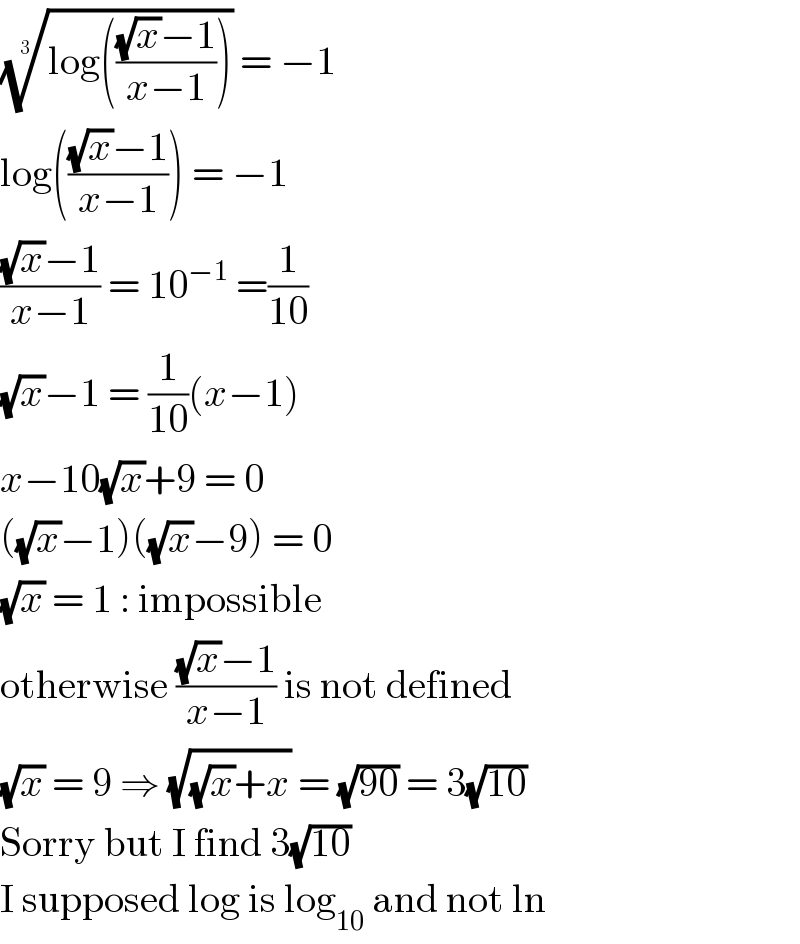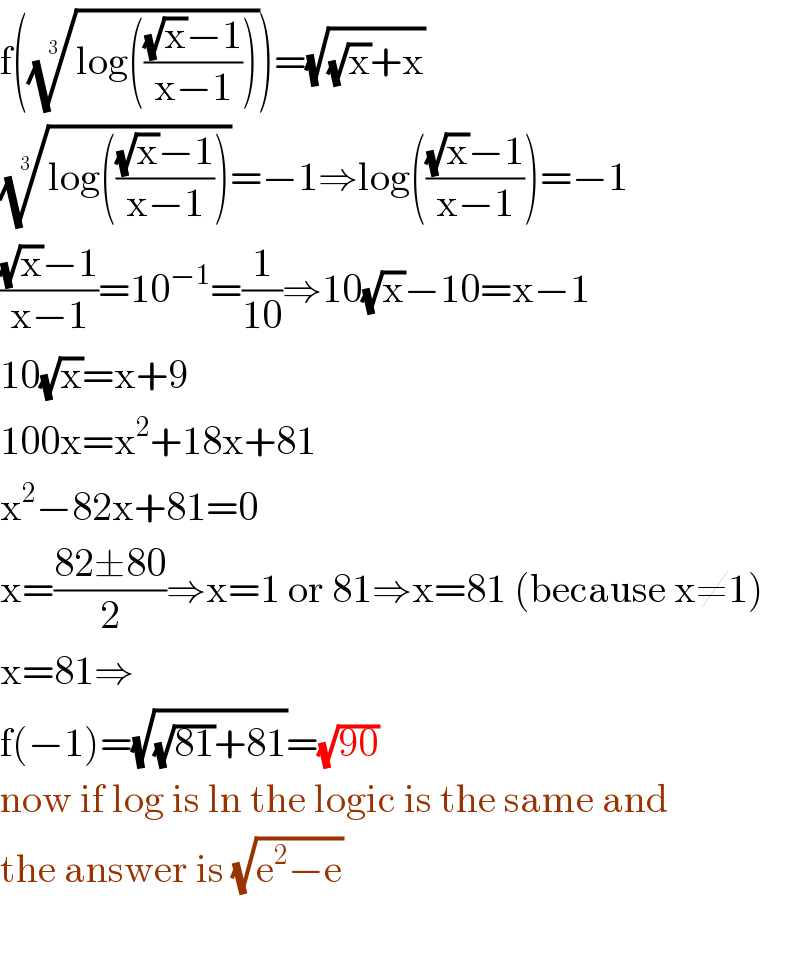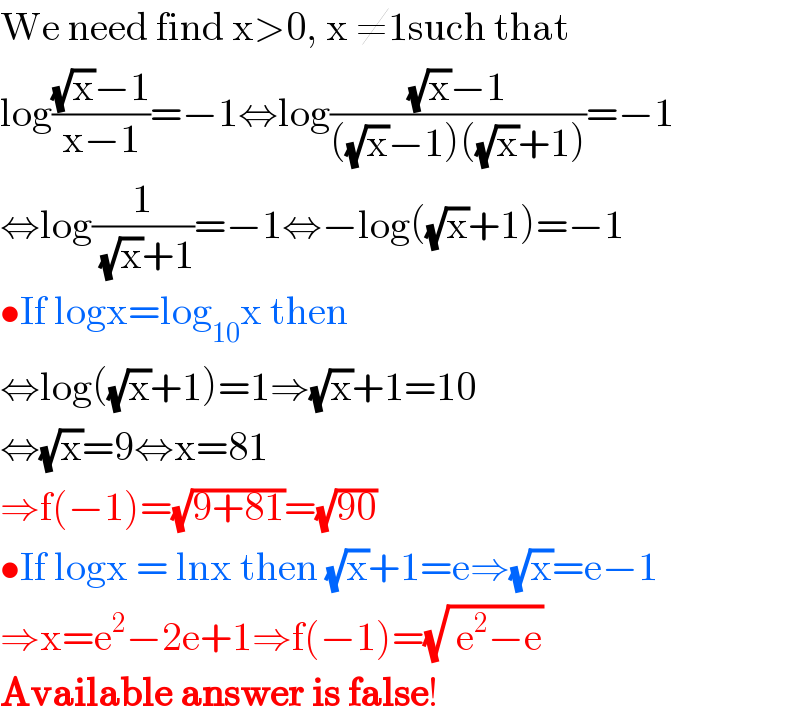Question Number 114597 by O Predador last updated on 19/Sep/20
![What is the number value of f[((log((( (√(x )) − 1 )/(x − 1))) ))^(1/3) ] = (√((√(x )) + x )) for f(−1)? a) 0,1 b) 27 c) 81 d) 10 e) 12](https://www.tinkutara.com/question/Q114597.png)
Answered by Olaf last updated on 19/Sep/20

Commented by O Predador last updated on 20/Sep/20

Answered by floor(10²Eta[1]) last updated on 20/Sep/20

Answered by 1549442205PVT last updated on 20/Sep/20

